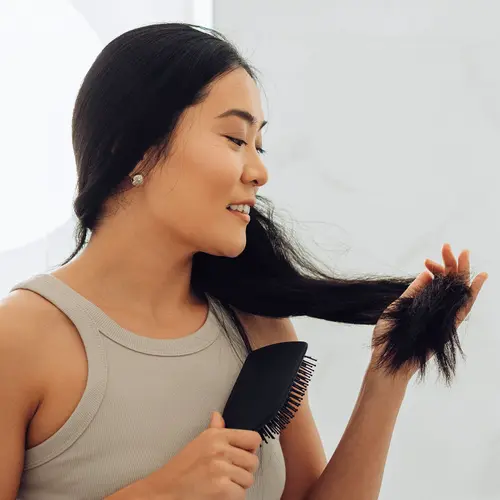When hair removal is part of your regular beauty routine, you might use several methods on different parts of your face and body. You might even be thinking about permanent removal methods so you have fewer things to do in the morning. You have many choices, so you can try different ways to make your skin smooth.
Tweezing
How it works: You pull out individual hairs by the root with tweezers.
Best for: Small areas of the face
How long it lasts: 3-8 weeks
Tips: Clean tweezers with rubbing alcohol before and after each use to lower your chance of infection.
Possible side effects: If the hair breaks off, it could grow back under the skin, causing an ingrown hair.
Shaving
How it works: Using a razor or electric shaver, you cut the hair very close to the skin. "There's a popular myth that shaving causes hair to grow back coarser," says dermatologist David Pariser, MD. "But that's not true. An unshaved hair has a tip that is tapered and soft. When you shave it, you shave off the soft tip, so it feels coarser."
Tips: If you use disposable razors or blades, wet your skin and use soap or shaving cream. Shave in the direction the hair grows. Replace your razor often -- you can cut yourself with a dull one.
Best for: It works anywhere.
How long it lasts: 1-3 days
Possible side effects: Ingrown hairs, especially in the bikini area
Waxing
How it works: A cosmetologist spreads sticky wax on your skin, then covers it with cloth strips. When the wax dries, the strips are quickly pulled off, taking the hair with them. Some types of wax can be pulled off without cloth strips.
Best for: Anywhere on the body, including the face, underarms, legs, and bikini area
How long it lasts: 3-6 weeks
Possible side effects: Redness and bumps. You could also get an infection around the hair follicles. The more often you wax, the less likely you are to have an infection.
Tips: Hair has to be at least 1/4 inch long for the wax to grab it. So let your hair grow for a few weeks before waxing.
Laser/Pulsed Light
How it works: A technician destroys the roots with strong beams of light. "Laser hair removal really is the most effective way to have long-term hair reduction," says dermatologist Cameron Rokhsar, MD. "It's as permanent as it gets."
Best for: Laser and IPL (intense pulsed light) work anywhere on the body. It's best for women with dark hair and light skin. It won't work on white hair and doesn't work well on blond hair either.
How long it lasts: It may take between 6-12 treatments to see results. You may need to go back every 6-12 months for a touchup.
Possible side effects: Swelling or redness. Because there's also a chance of burning and scarring, it's best to have laser treatments where there's a doctor on staff, Pariser says.
Electrolysis
How it works: A trained expert places a tiny needle inside each hair follicle to destroy the root with an electric current.
Best for: Because it takes a long time, it's best for small areas like the upper lip or chin. Women with white or blond hair who can't get laser or IPL may see results from electrolysis.
How long it lasts: You'll likely need treatments every 1-2 weeks until the hair is mostly gone.
Possible side effects: Redness, swelling, and scarring
Over-the-counter creams
How it works: Depilatory creams or lotions dissolve proteins that make up hair.
Best for: Legs, underarms, and bikini area. There are special formulas for the face, but they sometimes don't work well on coarse hair.
How long it lasts: A couple of days to a couple of weeks.
Possible side effects: "They work by dissolving the hairs," Pariser says. "But they also can dissolve the skin if left on too long or [if] your skin is too sensitive." To avoid problems, follow directions carefully.
Prescription creams
How it works:Vaniqa is a cream you rub on every day. It doesn't remove hairs, but it slows down how fast they grow and makes them come in finer and softer.
Best for: It's often used together with laser or shaving, Rokhsar says. "It gives you a little more time in between treatments."
Hormones
How it works: Sometimes menopause or conditions like polycystic ovary syndrome can cause extra hair growth. In those cases, your doctor might suggest a medicine like birth control pills to lower the amount of hormones that are linked to hair growth.


